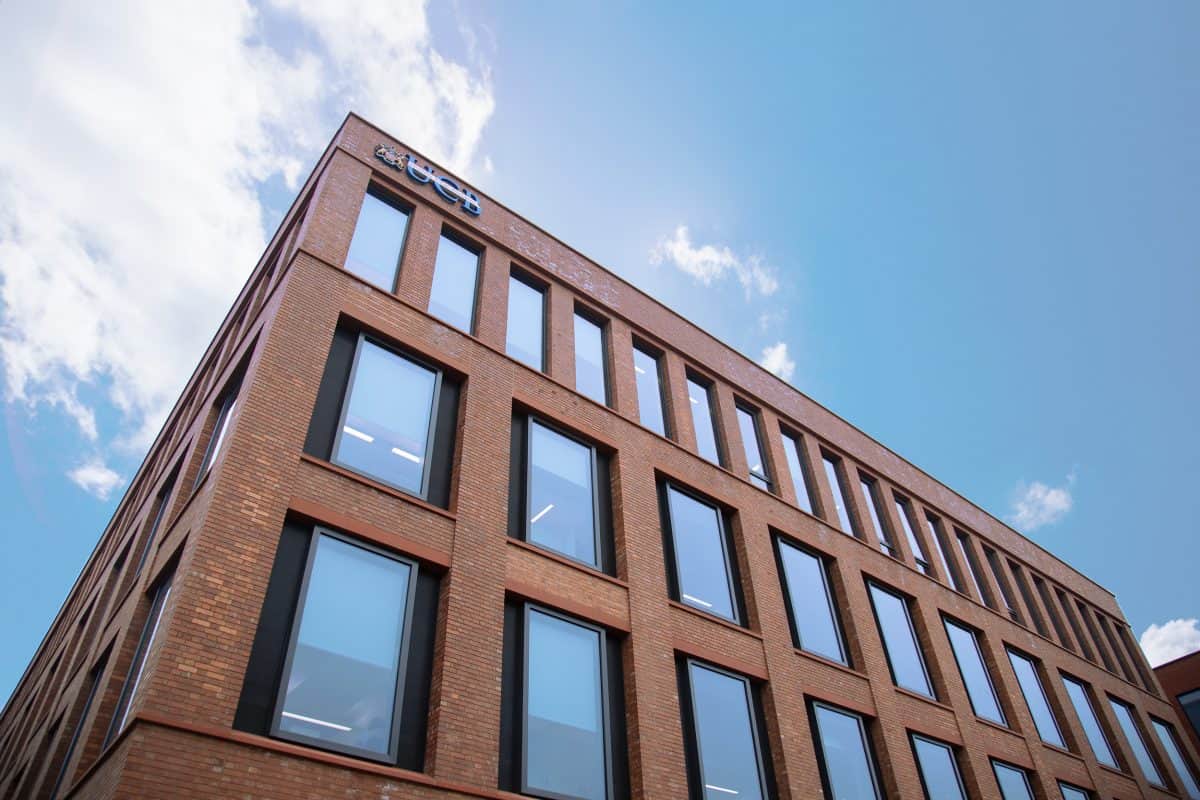Moss House campus at University College Birmingham wins award as one of the best buildings in region
Reading Time: 3 minutes
Moss House campus at University College Birmingham wins award as one of the best buildings in region
Moss House – University College Birmingham’s newest campus building in the Jewellery Quarter – has been recognised by the prestigious Royal Institute of British Architects.
Described as “inventive and experimental”, the campus was one of just nine buildings in the West Midlands to win at the regional RIBA awards.
This means Moss House is now shortlisted for this year’s RIBA National Awards, set to be announced in September.

Spanning everything from residential and commercial to educational buildings, this year’s main awards theme was connectivity and collaboration, within the building itself and beyond to the wider community.
Glenn Howells, partner at Glenn Howells Architects, who spearheaded the project near the University’s three other campuses, said:
Moss House is a really significant new building for Birmingham and we are delighted that it has been recognised with an RIBA West Midlands Award.
This award is a testament to the hard work of the whole design team in delivering such a special, finely crafted and sustainable building, but most importantly, it is a testament to University College Birmingham as a client and for their commitment to the future of higher education in the city.
They are driving forward their ambition to create the best possible learning environment for students and staff and we are grateful for the opportunity to work in collaboration with such an enlightened and ambitious client.
Judges feedback
Judges said with many of the higher and further education students at University College Birmingham living locally, but spending the day at college, there was a “solidity to the building that feels like it will stand the test of time.”
They described the design plan as efficient and rational, with “a central stepped atrium with informal collaboration space at each landing to encourage interaction between students, with teaching spaces off to either side”.
And they deemed Moss House’s specialist spaces for sports, nutrition and healthcare “well-considered” and “spacious and robust”, testament to the £130 million invested in facilities across the University in the last seven years.
They also noted that “light floods in through the rooflights above the atrium, and through the large picture windows to the teaching rooms around the perimeter. The atrium is very much the central social hub”.
The staircase was also described as a “statement piece” that was functional, as well as chunky and solid, and looked robust enough to “withstand years of footfall from students without compromising its appearance.”
They added: “The dining area feels more like a commercial restaurant that would be open to the public than a student diner; this space also offers the students an opportunity for training in food and nutrition. The diner and adjacent café with the associated seating has been named The Living Room by the university – after being referred to as such by the architects through the design process.
“The informality of this space is important for younger students who spend the whole day at college and need space to decompress between lessons.”
Described as “a very honest construction, but also one that involved careful detailing of every element,” Moss House was praised for being “contextual rather than showy”, with brickwork in keeping with the heritage of the area.
Judges also noted the generous window openings, reflecting the rhythm and proportions of those in the surrounding Victorian warehouse buildings, and the high sustainability credentials of the building.
Summing up, judges said: “This building is of an architectural quality befitting of the heritage of the Jewellery Quarter. It has set a high standard for future development in this area as well as providing a new world-class facility for University College Birmingham that will inspire its students for years to come.”
Strong competition
RIBA’s regional jury chair Nicola Rutt said of all of this year’s award-winners: “The shortlist for the West Midlands region was strong this year, with the prevalent theme being connectivity and collaboration, within the building itself, and beyond to the wider community.
“The scale of projects varied greatly with the larger projects co-locating departments and faculties into single buildings to create a working and academic community.
“The architecture of all the winning projects was inventive and experimental, regardless of scale, and driven through clients and teams who wanted to pioneer new ways of living, working and teaching.
“The award-winning entries are spread across a wide area, with most having been designed by West Midlands-based architects, which is testament to the high-level of architectural practice and ambition in the region.”
Moss House, which was built by contractor Kier, will now be considered for a highly-coveted RIBA National Award in recognition of architectural excellence, which will be announced on Thursday, September 9.
Winning projects will then be eligible for the 2021 Stirling Prize.
Find out more about Moss House and University College Birmingham’s other award-winning training facilities and campuses.

